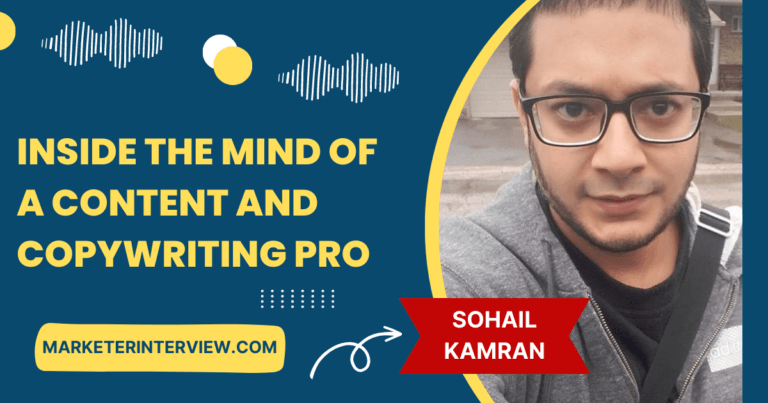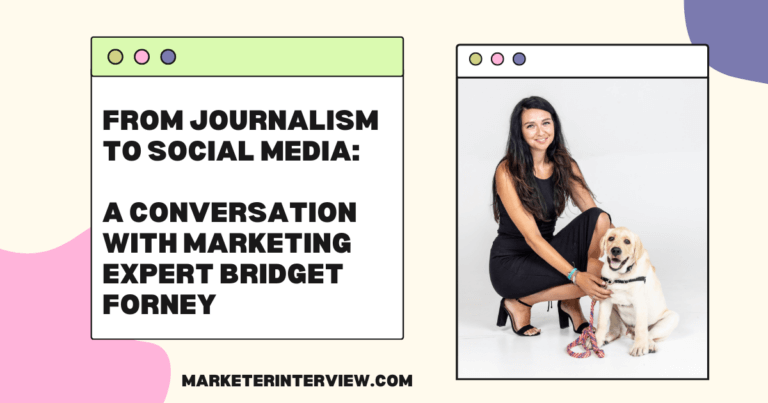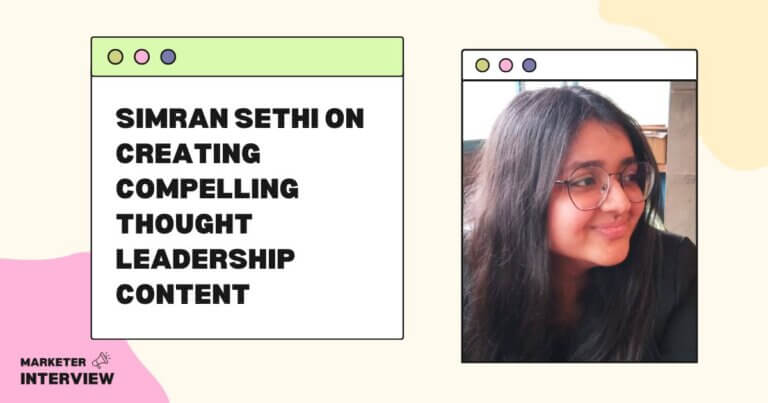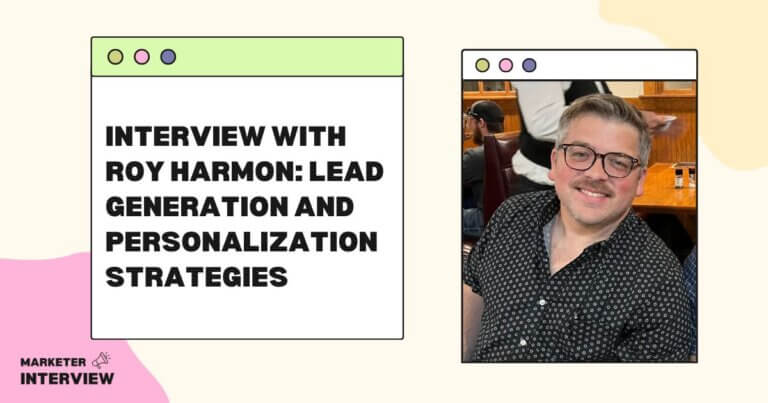Content Marketing & Brand Strategy: An Interview with Vassilena Valchanova
Welcome to Marketer Interview, where we delve into the minds of seasoned marketing professionals to uncover their journeys, insights, and strategies.
Today, we’re honored to have Vassilena Valchanova, a Freelance Content Strategist and Brand Expert, as our guest. With over a decade of experience in the field, Vassilena has a wealth of knowledge to share about content marketing, brand messaging, copywriting, and more.
She’s not just a marketer but also a trainer and public speaker, having educated over 2,000 students in various marketing disciplines. Vassilena’s impact extends internationally, as she’s spoken at conferences in Portugal, The Netherlands, Germany, Italy, Bulgaria, and Romania.
Contents
- 1 Can you share your journey into the marketing world and how you discovered your passion for content marketing and brand strategy?
- 2 You mentioned your affinity for the Jobs to be Done methodology. How has this framework influenced your marketing approach, and can you provide an example of its impact on a campaign?
- 3 Customer research and audience development are critical aspects of your work. Could you walk us through your process for understanding and connecting with a target audience?
- 4 Content strategy plays a vital role in marketing. What are some fundamental principles you follow when creating content strategies for brands?
- 5 Effective brand messaging is essential for any business. How do you craft compelling and memorable brand messages that resonate with audiences?
- 6 Can you share a notable success story from your career where your content marketing strategy significantly impacted a brand’s success?
- 7 Marketing is a rapidly evolving field. How do you stay updated with the latest trends and technologies and decide which ones are worth adopting?
- 8 Measurement is crucial for assessing the effectiveness of marketing efforts. What key metrics and KPIs do you prioritize, and how do you analyze and act upon the data?
- 9 Could you recommend some essential tools and software you find indispensable as a freelance content strategist and brand expert?
- 10 Finally, can you share your insights on how to align specific marketing campaigns or activities with a company’s broader business goals, a skill you’ve mastered over your career?
I graduated with a degree in Public Relations and started as an intern at an agency organizing events. This was right when social media was getting popular in Europe, and that’s when I stumbled across digital marketing as a field.
As my career progressed, I was involved in all sorts of digital marketing activities, from advertising and SEO to content production and analytics. I’ve always been interested in writing; content marketing became a natural outlet for this passion.
Once I decided to become a full-time freelancer, I wanted to ensure I had a clear focus, and content marketing was the natural way to go. Since creating content is also a fantastic way for brand building, branding, messaging, and copywriting became my second love.
Looking back, it seems like a very logical journey, but I never knew where I would get to when I was just starting.
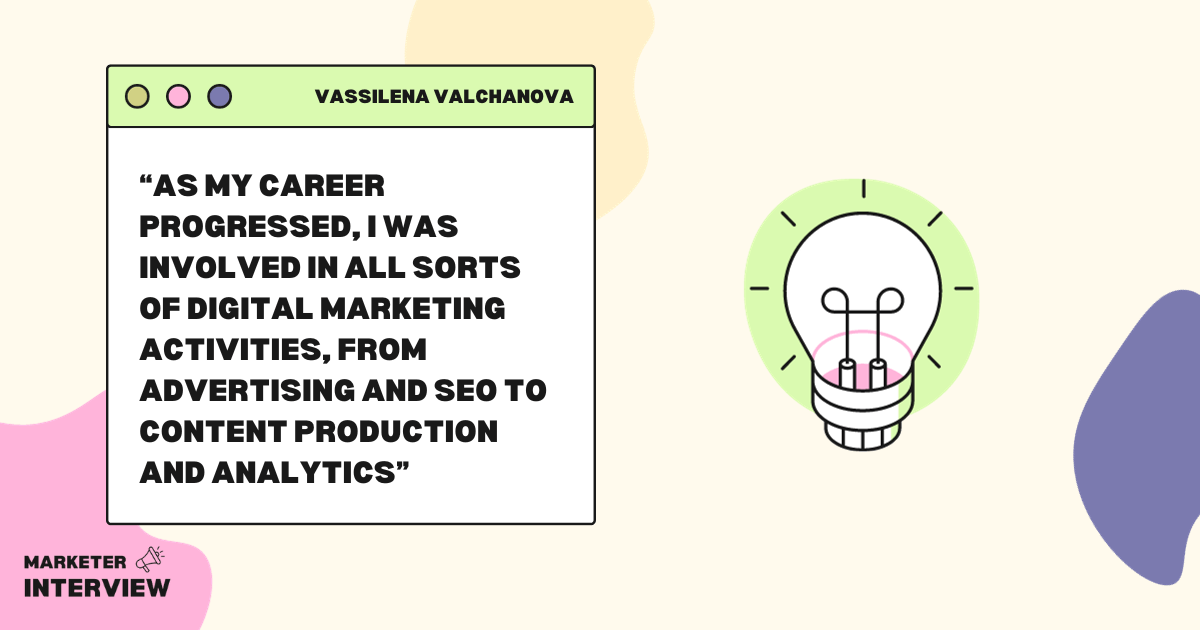
You mentioned your affinity for the Jobs to be Done methodology. How has this framework influenced your marketing approach, and can you provide an example of its impact on a campaign?
Yes, I love Jobs to be Done, as it is the ultimate way to think about your product or service through customers’ eyes. It’s also a way to focus on the profound value you bring rather than the external characteristics of a product. This enables you to go beyond the surface-level competitors and find the actual solutions customers use.
My favorite examples of Jobs to be Done are related to brand messaging. They usually involve novel ways of saying what you have to say in a format that makes customers feel seen and heard. They come to your landing page, look at the copy, and immediately say, “Yes, this is exactly it. This is what I’m feeling now!”
Here’s a specific example. I worked with a client who created a SaaS product for corporate event managers. It was a tool that facilitated travel planning and hotel bookings on behalf of corporate event guests. There are a lot of well-established enterprise solutions for this, and we could’ve easily pitted our tool against them, going into a feature war. However, we discovered that most event managers still use spreadsheets and email to manage corporate travel. There was a lot of frustration related to the fact that their work still felt like part of the 20th century in an age of shiny online tools and platforms. And we channeled that frustration on our landing page, pointing out that there needs to be a better way.
The new messaging was very well received because event managers felt like we knew what they were going through, creating trust. It was a simple messaging improvement but substantially impacted our relationship with potential customers. Of course, it had a visible impact on sign-up rates and trials.
Customer research and audience development are critical aspects of your work. Could you walk us through your process for understanding and connecting with a target audience?
Customer research is a very human thing. To do it well, you must come from a place of empathy and curiosity.
The best way to develop an understanding of your target audience is to just talk with people. Many digital marketers are accustomed to looking at statistics, demographic data, and insights from Google Analytics, but the most exciting bits of information need to be there. They can come from a 30-minute conversation with a new contact at a networking event or observing your customer at the checkout aisle.
To become a better marketer, dedicate at least a couple of hours monthly to connect with customers. Talk to them, understand what they need, dream of, or are anxious about. Don’t do it with any hidden agenda to sell or promote – do it to understand. This habit will vastly improve any marketing activities you plan and any content or copy you create.
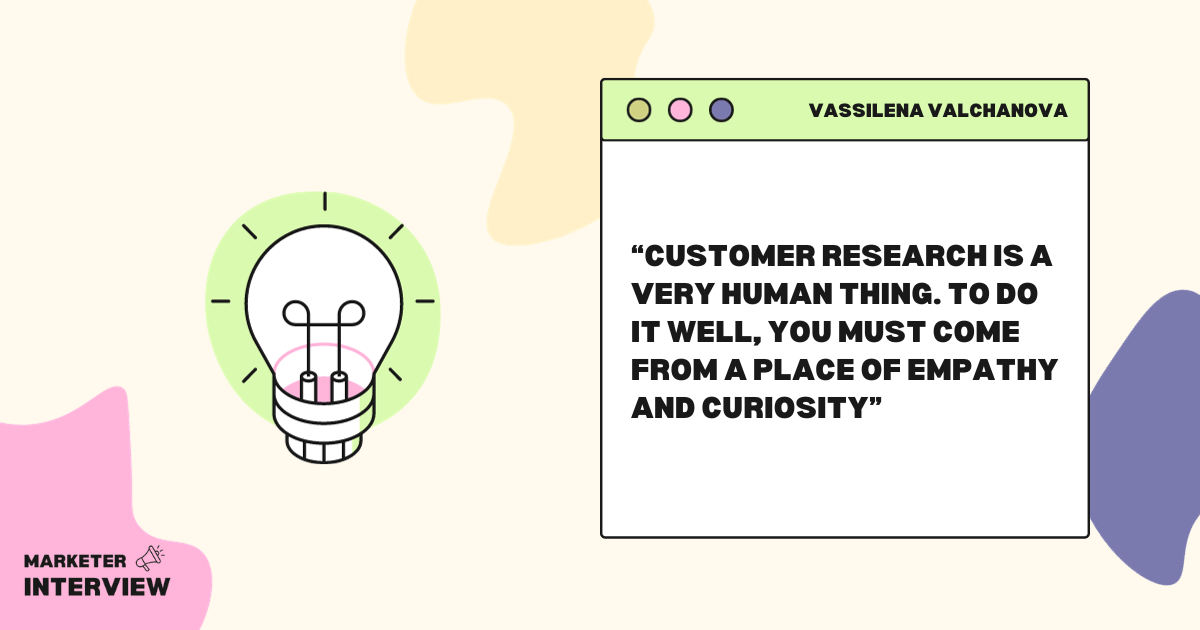
Content strategy plays a vital role in marketing. What are some fundamental principles you follow when creating content strategies for brands?
There’s one critical concept when it comes to content strategy: value.
You need to create something that isn’t just talking about your product or service but that’s valuable to your audience. People are inundated with content now, and this will only become more and more true with the rise of AI. So, as marketers, creating something of value is the only way to get attention, keep attention, and monetize that attention into long-lasting customer relations.
When I’m working with a new client, we ask who’s the customer and what we can create that will be valuable for them. It can make them smarter, laugh, or make them think.
It’s straightforward to persuade a customer to give you money once. But it’s very, very hard to get customers to come back again and again. They’ll only do it if they know, like, and trust your brand. And this is where content can be your most valuable asset.
Effective brand messaging is essential for any business. How do you craft compelling and memorable brand messages that resonate with audiences?
It was Steve Jobs who said that great artists steal, especially when it comes to copywriting and brand messaging. No matter how creative or talented you are as a copywriter, the most effective copy you can create comes directly from what we call “voice-of-customer data.” These are words and phrases that your customers would use to describe your product, to talk about the outcome they hope to achieve or the pain they feel.
To do that, we use a technique called “message mining.” This is a straightforward process. You find places online where customers talk about your solution or category, and you note down the words and phrases that they use. Some landing pages I create for customers include 40, 50, or even 70% of words mentioned directly by customers in reviews or online communities.
By mirroring back the exact phrases that a customer might be thinking or using in conversation, you tell them, “I know what you need, and I’m here to give it to you.” And this is the most compelling and memorable message you can ever create.
My favorite example comes from the intersection of B2B services and personal branding.
I was working with two business consultants who were very successful, with strong personal brands, and had a joint consulting business and a closed online community to promote. So, we’re talking about four separate, interconnected, and powerful brands. The challenge was that customers came to them through different channels and only saw a part of the story. Some knew about one of the founders but had never heard of the consulting business; some knew the online community but weren’t familiar with the founders.
We ended up doing a structured new lead onboarding rooted in storytelling that ensured every new lead knew the most important details about this “constellation of brands.” This ensured that new leads were much better educated and were much more interested in what the consultancy founders had to say. This also made getting potential clients interested in company training and consulting projects easier. It’s a prime example that you can already be very successful, but content can elevate your brand, bring potential customers closer, and improve their understanding.
Marketing is a rapidly evolving field. How do you stay updated with the latest trends and technologies and decide which ones are worth adopting?
I am a voracious reader. Оn my newsletter’s page, there’s this promise that I read more than 180 weekly articles, so you don’t have to. And the number is entirely correct. I subscribe to several trusted sources through RSS and use newsletters from fellow marketers as a sort of filter that brings the most exciting resources to my inbox. I try to pay it forward with my newsletter.
In the marketing field, there’s a severe “shiny object syndrome,” you have to be very specific when deciding what is worth exploring from all the new opportunities out there. If it’s a “hack,” I will most likely skip it. I don’t believe in quick wins, and I prefer strategic growth. But if we’re talking about a new channel or a rising content format, I will probably start by being a consumer – by exploring it from a customer perspective. Only after I know the distinct value will I propose adopting this novelty to customers.
Measurement is crucial for assessing the effectiveness of marketing efforts. What key metrics and KPIs do you prioritize, and how do you analyze and act upon the data?
The answer to this question highly depends on your goals for a specific period or marketing campaign, and it’s hard to give a true-for-all formula.
In your role as a trainer, what are the most common challenges you find marketers facing when it comes to content marketing and copywriting, and how do you help them overcome them?
There’s this belief that creating content or writing good copy comes from a place of natural talent or requires a muse. I pride myself on needing to be more creative and structured instead. This helps a lot when I must teach others how to produce good content or create an attention-grabbing copy. It’s all about rooting your strategy in a deep, intimate understanding of your customers and creating something that speaks to their needs. You can use repeatable processes, and there isn’t any mystery or magic behind it. It is just about doing the work.
Could you recommend some essential tools and software you find indispensable as a freelance content strategist and brand expert?
Frankly speaking, tools are easy to find, and the best tools you can use are the ones you can stick to. One of my favorites is an analog bullet journal that gives me the space to think and reflect. Regarding personal productivity, my two go-to’s are Todoist for managing tasks and Evernote for writing down ideas and collecting resources.
We often think the key to success is finding the right tool, but Michaelangelo would have been just as successful with a different set of brushes.
This constant push to deliver results today is antithetical to what content marketing is about. So you need to know the difference between marketing activities that can bring results today and marketing activities that are investments.
Here’s an example: most of the traffic to my blog and the cold leads that come through it are from articles I’ve written two years ago or more. Content is hard to start, but if you can manage it, you continue seeing results for a long time, even after you stop investing new time and effort.
Andy Crestodina has this great analogy: if your business is a boat, then PPC and performance marketing are the motor, and content marketing is the sail. As soon as you start your motor, the boat starts moving forward, but as soon as you stop, the boat stops. On the other hand, using your sail requires you to work to catch the wind, but when that happens, your boat will continue going forward. That doesn’t mean that the two approaches are more or less than the other. It just means you need to know when to use one and what to expect from each one. And you need to make your management, client, or stakeholders know the difference, too.

